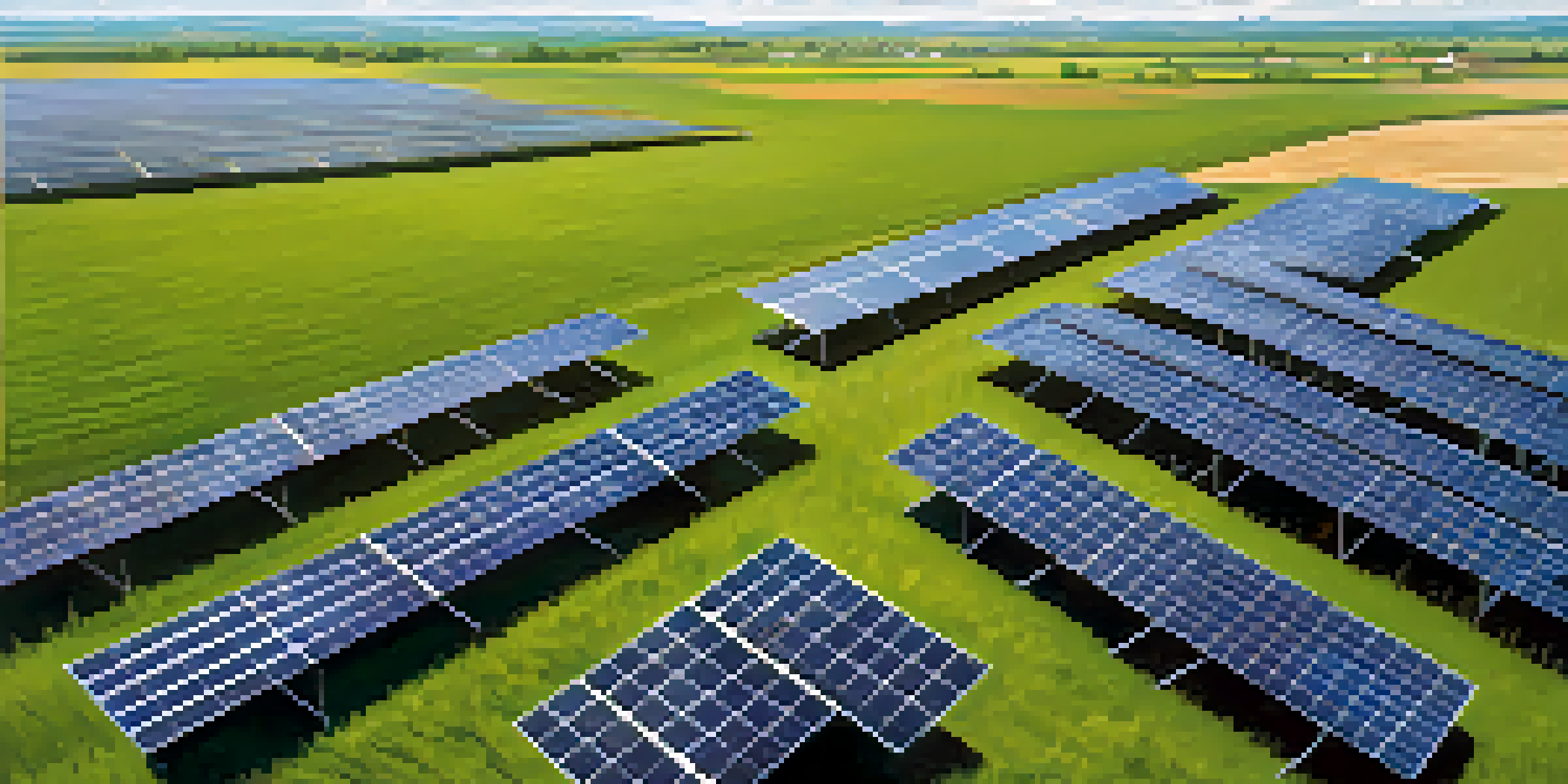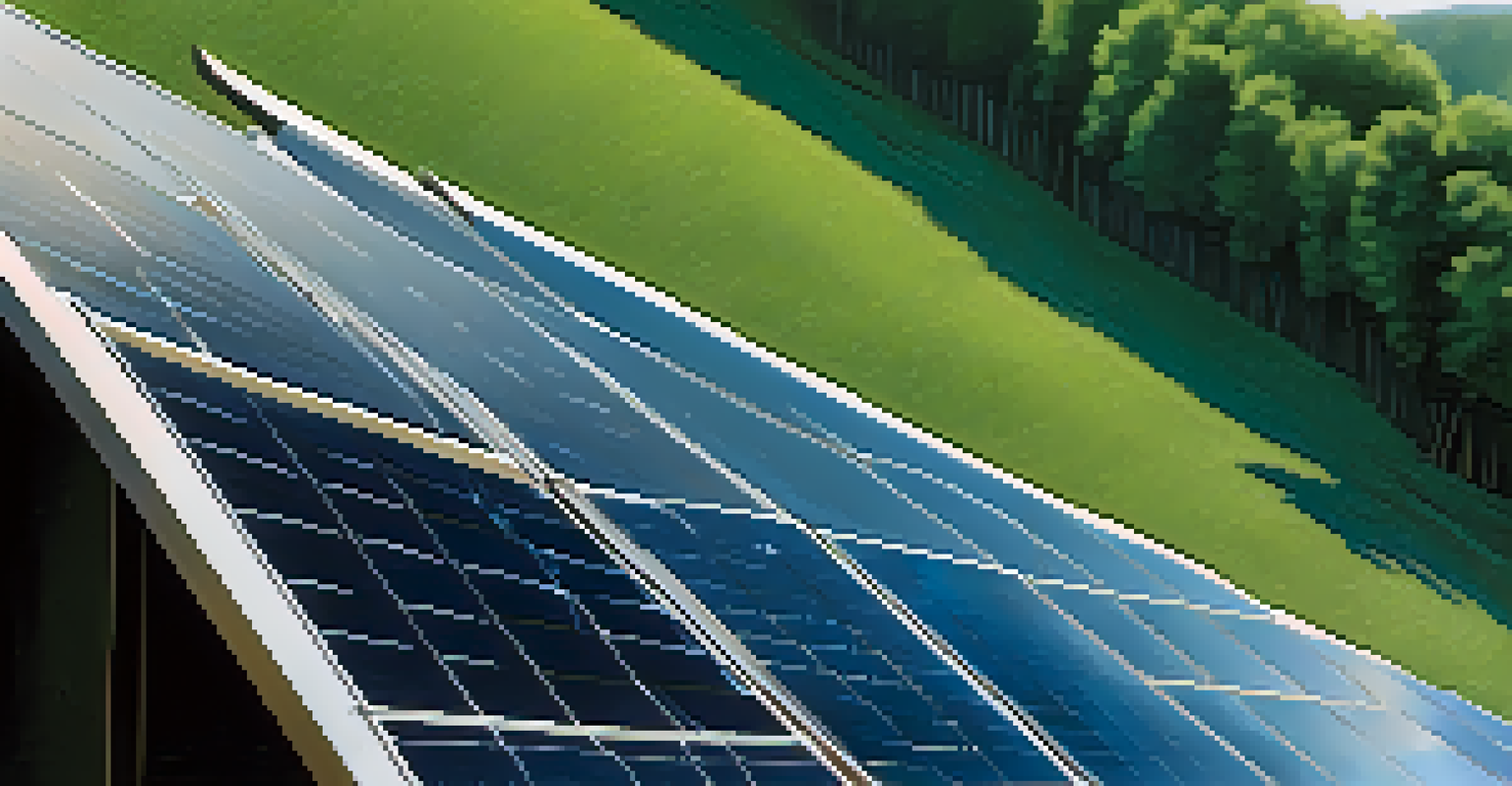The Economics of Renewable Energy: Investment Insights

Understanding Renewable Energy Economics
Renewable energy economics revolves around the financial aspects and market dynamics that drive the development of sustainable energy sources. As we shift from fossil fuels, understanding these economics is crucial for investors and policymakers alike. The costs associated with renewable technologies, like solar and wind, have drastically decreased, making them more competitive with traditional energy sources.
The future belongs to those who believe in the beauty of their dreams.
One key aspect is the concept of Levelized Cost of Energy (LCOE), which represents the average cost to produce energy over the lifetime of a project. LCOE allows investors to compare different energy sources on an equal footing. For instance, as solar panel prices drop, their LCOE becomes more attractive, encouraging more investments.
Moreover, government incentives and subsidies play a pivotal role in shaping renewable energy investments. Policies that support green energy not only enhance profitability but also mitigate risks. This synergy between economics and environmental benefits creates a compelling case for investing in renewables.
Current Trends in Renewable Energy Investments
The renewable energy sector is witnessing unprecedented growth, fueled by technological advancements and increased awareness of climate change. In recent years, countries worldwide have ramped up investments in wind, solar, and other renewable resources. In 2022 alone, global investments in renewables surpassed $500 billion, signaling a robust market confidence.

One notable trend is the rise of corporate investments in renewable energy. Many companies are committing to sustainability goals, often investing directly in renewable projects to power their operations. This trend not only helps corporations reduce their carbon footprint but also stabilizes energy costs in the long run.
Renewables Are Economically Competitive
The decreasing costs of technologies like solar and wind have made renewable energy increasingly competitive with traditional sources.
Additionally, innovations in energy storage are transforming the landscape of renewable energy. As storage technologies improve, they allow for better integration of renewables into the energy grid, making them more reliable. This evolution further attracts investors looking for sustainable and future-proof opportunities.
The Role of Government Policies in Investment
Government policies are critical drivers of renewable energy investment, shaping the market through regulations, incentives, and funding. For instance, tax credits and subsidies can significantly reduce the cost burden on developers and investors. This can lead to a more vibrant renewable sector, attracting both domestic and foreign investments.
The greatest threat to our planet is the belief that someone else will save it.
Moreover, clear and stable regulatory frameworks are essential for long-term investments. When businesses know what to expect from government policies, they're more likely to commit financially. Countries that establish supportive policies, like feed-in tariffs, create an environment conducive to growth in renewable energy.
However, the interplay between politics and economics can also introduce uncertainties. Changes in leadership or policy direction can impact investor confidence. Thus, understanding the political landscape is just as important as assessing market conditions when considering renewable energy investments.
Risks and Challenges in Renewable Energy Investment
Like any investment, renewable energy comes with its own set of risks and challenges that investors must navigate. One major concern is the intermittency of renewable sources, such as solar and wind, which can affect reliability and energy supply. This unpredictability can deter some investors who prioritize stability.
Another challenge is the capital intensity of renewable projects. While operational costs may be low, the initial investment can be substantial. Investors often need to weigh the high upfront costs against the long-term benefits, which can complicate decision-making.
Government Policies Drive Growth
Supportive government policies and incentives are essential for attracting investments and fostering growth in the renewable energy sector.
Furthermore, technological risks cannot be overlooked. The renewable sector is rapidly evolving, and what seems promising today could be outdated tomorrow. Investors must stay informed and agile to adapt to new technologies and market shifts, ensuring their investments remain relevant.
The Impact of Technological Innovations
Technological innovations are at the forefront of driving down costs and improving efficiencies in renewable energy. Breakthroughs in solar panel technology, for instance, have led to more efficient energy capture and conversion. This not only makes solar energy more accessible but also enhances its attractiveness to investors.
Wind energy has also benefited from advancements like larger turbines and improved site assessment tools, which increase energy output. These innovations reduce the overall cost of wind farms, making them more competitive in the energy market.
Moreover, the development of smart grids and energy management systems is transforming how renewable energy is integrated into existing infrastructures. By optimizing energy distribution, these technologies minimize waste and enhance reliability, which ultimately boosts investor confidence in renewable projects.
Global Market Dynamics Influencing Investments
The global market for renewable energy is influenced by various factors, including geopolitical situations, energy demand, and economic conditions. For instance, the growing demand for clean energy in developing nations is creating new investment opportunities. As these countries seek to diversify their energy sources, they often turn to renewables, opening doors for investors.
In contrast, regions reliant on fossil fuels may face challenges as they transition towards greener alternatives. The pace of this transition can vary significantly, affecting global supply chains and investment flows. Investors must stay attuned to these dynamics to make informed decisions.
Technological Advances Enhance Viability
Innovations in energy storage and smart grid technology are improving the reliability and efficiency of renewable energy, making it more attractive to investors.
Additionally, international agreements and climate goals play a crucial role in shaping investment strategies. Commitments made at forums like COP conferences can influence national policies and, in turn, the renewable energy market. Understanding these global dynamics is essential for anyone looking to invest in the renewable energy sector.
Future Outlook for Renewable Energy Investments
The future of renewable energy investments looks promising, with many analysts predicting continued growth over the next decade. As technology advances and costs decrease, renewable energy sources are expected to become even more viable options for both consumers and investors. This trend is likely to be accelerated by heightened awareness of climate change and the urgent need for sustainable solutions.
Moreover, the push for decarbonization across various sectors is likely to create new investment opportunities. Industries such as transportation and construction are increasingly looking for ways to incorporate renewable energy into their operations. This cross-sectoral shift indicates a robust market potential for investors.

However, it's crucial to remain vigilant about potential challenges, such as regulatory changes and market volatility. Keeping an eye on emerging trends and technologies will help investors position themselves strategically for the future. Overall, the renewable energy sector offers a landscape rich with possibilities for those willing to embrace it.